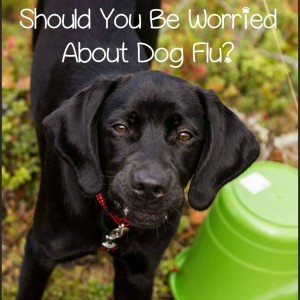This has been a severe flu season for humans, but it’s also hitting dogs and cats pretty hard as well. Cases have been reported in 46 states, and veterinarians are reporting a substantial increase in visits to clinics when compared to totals from previous years. The good news is that dogs and cats rarely suffer from life-threatening complications associated with the flu, but the bad news is there is little that can be done to treat them once they’ve become infected.
How is it Spread?
Strains of influenza that affect pets behave in ways that are similar to their human-targeting counterparts. The most-common route of exposure is from inhaling or ingesting saliva or moisture from the breath of an infected animal. Consequently, being around an animal that is sick, or going to an area that has been contaminated by one before the virus could die-off, represents the greatest risk. Since dogs have a tendency to slobber everywhere, lick, and put all kinds of things in their mouths, one infected dog can pass on the virus to dozens, if not hundreds of other animals. This is why viruses spread like wildfire in kennels, doggy-day care centers, dog parks and vet clinics.
Additionally, the influenza virus can also live for quite a long time outside of the host’s body. It can survive on surfaces for up to 48 hours and remain on paws, fur and skin for up to a day. To make matters worse, about 20% of dogs will not display any symptoms whatsoever if they do become infected, and it can take up to three days for symptoms to appear after a dog has been infected. Consequently, the window for the virus to spread before owners suspect anything is wrong is pretty large.
Symptoms
The first thing that owners generally notice is the development of a persistent, muted cough. Dogs may also seem sad, lethargic and display less-interest in things. They may start to eat less and sleep more as well. Other symptoms include watery eyes, a runny nose, sneezing and unusual mucous discharge from nostrils. These symptoms will normally resolve themselves within about a month, but there isn’t much that can be done other than to provide dogs with plenty of fluids and nutrition until the virus runs its course.
In rare cases, dogs can develop severe, life-threatening symptoms that include a high-grade fever, difficulty breathing and pneumonia as the virus attacks the lungs and respiratory system. In a worst-case scenario, aside from death, a dog’s lungs can be damaged to the point where they need supplemental oxygen for the rest of their lives.
Prevention
The best thing that owners can do is to isolate their dogs from possible sources of exposure. Be on the look out for sick dogs at dog parks and kennels, don’t let the dog eat or drink from communal bowls, and keep a dog that has symptoms away from other animals as well. People can also get their dogs vaccinated, but the vaccines will only protect against one strain of the virus. Consequently, if there are three prevailing viruses at any given point in time, then the dog will need three separate vaccines.
Finally, it’s important to note that there is no specific dog flu season, and the virus remains active throughout the year. Consequently, it’s important to be vigilant all year long, particularly if the dog interacts with a lot of different animals.
Learn more about dog flu and what you can do to minimize the impact that exposure can have on your pet. The more aware and proactive you are now can go a long way toward keeping your pet healthy while also helping to control the spread of the virus in your area as well.

